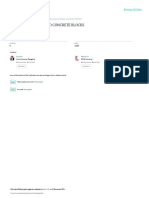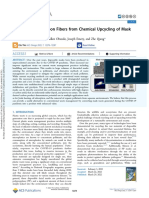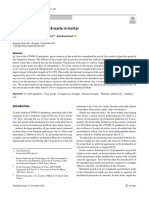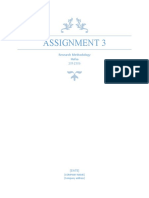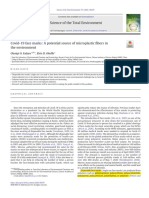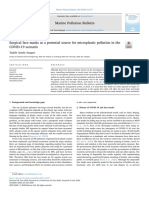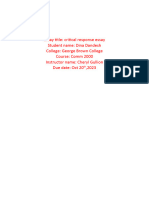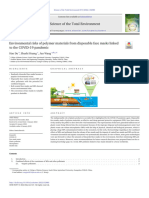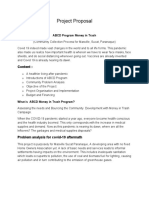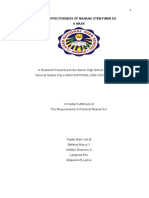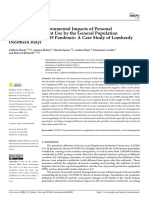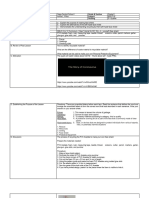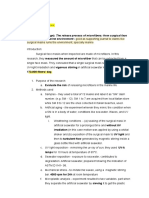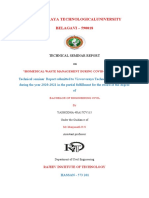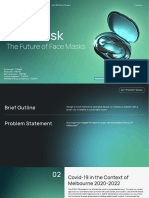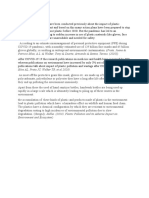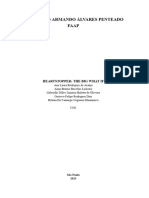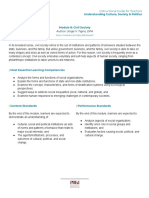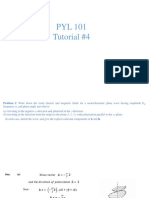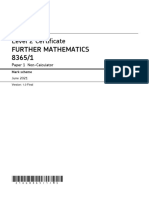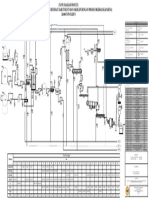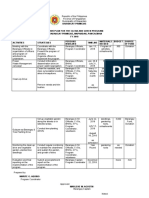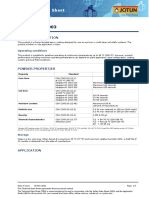MAHARASHTRA STATE BOARD OF TECHENICAL EDUCATION
KRUSHNAJI PURUSHOTTAM CHOUSALKAR
YOGESHWARI POLYTECHNICCOLLEGE, AMBAJOGAI
PROJECT REPORT ON
“SMART DISPOSAL OF FACE MASK INTO PAVER BLOCK ”
Submitted By
Enrollment No Name of Student
2215360090 Ambad Mahesh B.
23512090161 Ambad Vaishnav B.
2215360080 Kashid Sushil D.
23512090155 Khan Azmat S.
23512090162 Paralkar Pavan R.
2215360065 Somvanshi Akshay P.
Page 1 of 38
� UNDER THE GUIDENCE OF
MR. KADAM R.P.
DEPARTMENT OF CIVIL ENGINNERING
YEAR – 2024-25
KRUSHNAJI PURUSHOTTAM CHOUSALKAR
YOGESHWARI POLYTECHNIC COLLEGE, AMBAJOGAI
2024-25
CERTIFICATE
This is certified to those Mr. Mahesh B. Ambad, Mr. Vaishnav B. Ambad.
Mr. Pavan R. paralkar, Mr. Akshay p. Somvanshi, Mr. Sushil D. Kashid,
Mr. Azmat S. Khan student of diploma in civil engineering has submitted
project report on “SMART DISPOSAL OF FACE MASK INTO
PAVER BLOCK”In this volume he submitted a satisfactory report about
the project, in academic year 2024-25.
Page 2 of 38
� (Guide) (H.O.D.) (Principal)
Mr. Kadam R. P. Mr. Kadam R. P. Mr. Raman Deshpande
Department of Civil engineering
Academic Year 2024-25
ACKNOWLEDGEMENT
I offer my sincere & hearty thanks, with a deep sense of gratitude, my guide
MR. KADAM R.P. and Head of Department MR. KADAM R.P. for his
valuable direction and guidance to my report. Hismeticulouattention towards
my project work without taking care of his voluminous work.
I am thankful to our Principal,Mr. R.S. Deshpande,for his encouragement
towards our project.
Last but not least I think my friend and well wishes, to whom I am
indebted for their constant help, encouragement and without whom, this
would not be a success.
Mr. Mahesh B. Ambad, Mr. Vaishnav B. Ambad, Mr. Pavan R. paralkar,
Mr. Akshay p. Somvanshi, Mr. Sushil D. Kashid, Mr. Azmat S. Khan
Page 3 of 38
� ABSTRACT
Since the COVID-19 outbreak we are living in an extremely unprecedented time. As per the
guidelines ruled out by the WHO, PPE kits like face masks are required in all nations
throughout the world. This has led to a significant increase in the manufacturing and use of
disposable facial masks. These masks, because of being only single-use, have accumulated
over 1.5 Billion in numbers worldwide. The inability to effectively dispose of discarded facial
masks puts the environment in danger by creating a new type of non-biodegradable plastic
trash,whichmighttakeaslongas450yearstobreakdown.Asaresult,thereisapressingneed for
innovative, environmentally appropriate recycling of such waste. In this capstone project, we
present an effective solution to make pavement block that is not only environmentally
beneficial but also inexpensive to cast. The percentage of shredded face masks used in our
experiments was 50%. The results of the experiments indicated that, shredded face masks
combined with the concrete and acts as a reinforcement in the pavement block. Thus it has
therefore been proven that the used face masks that add to the overall global pollution can be
approachedsustainablytocreatesolutionsforsuchuprisingproblems.Theexperimentalresults
obtained in this study stipulate the improved mechanical properties of the pavement block
while also addressing a highly hazardous environmentalissue.
Keywords: Non-biodegradable, Shredded, Hazardous, Recycling, WHO etc
Page 4 of 38
� INDEX
Chapter Chapter Name Page No
No. (From – To)
1 Introduction 12-13
2 Literature Survey 15-17
3 Proposed Methodology 19-29
4 Test results 31-36
5 Standard paver block 38-41
6 Disposable face mask (DFM) paver block 43-44
7 Future scope of project 46
8 Conclusion 50
9 References 52
Page 5 of 38
� LIST OF FIGURES
Fig. Name of Figure Page No
No.
1.1 Three layer disposable face mask 13
3.1 (A) Methodology 19
3.1 (B) Methodology 20
3.2 Collection of used disposable face mask 23
3.3 Keeping in sealed box 23
3.4 Shredding of face mask 24
3.5 Disinfection of mask 24
3.6 (A) Applying oil to mould 25
3.6 (B) Applying oil to mould 25
3.7 Taking all materials for mixing as per specific 26
proportion
3.8 Mixing of material 26
3.9 Placing of concrete in mould 27
3.10 Compaction of concrete 27
3.11 Demoulding the DFM pavement block after 24 hours 28
3.12 DFM pavement block ready for use 28
3.13 Team with DFM paver block 29
4.1 Compressive strength test of trihex paver bloc 80 mm 31
thickness
4.2 Compressive strength test of DFM paver block 32
4.3 Flexural strength test of trihex paver block 33
4.4 Flexural strength test of DFM paver block 34
4.5 Water absorption test of trihex paver block 35
4.6 Water absorption test of DFM paver block 36
5.1 Standard trihex paver block 38
5.2 Types of paver block 39
5.3 Applications of standard paver block 40-41
6.1 DFM paver block (A) (B) (C) 43,44,46
Page 6 of 38
� LIST OF TABLES
Sr. Name of Table Page No
No.
1 Test results 31-36
Page 7 of 38
� CHAPTER 1
1.1 Introduction
Due to the Coronavirus (COVID-19) pandemic, the utilization of single use face masks which
havebeenanpredominantmethodforpreventativespreadofCOVID-19havesurgedtheworld due
to substantial increase in requirements. Almost 6600 million masks, weighing 2640.79
tonnes, are utilized every day. Single use face masks are manufactured from a multitude of
melt blown plastics (spun-bond polypropylene and melt-blown polypropylene). And this face
maskareofdoubleandsometimesoftriplelayer.Beingabio-medicalwastethemasksarenot
treatedassuch.Wecanatsightsofmaskslitteredeverywhere,fromcitystreets,localparks, dumping
yard to oceans, sewage systems and water bodies. Recycling of these inappropriate disposed
face masks may also lead to transmission of disease, and incineration is not advised due to
release of toxic gases such as Dioxin and Furan in incinerationprocess.
Our presented capstone project aims towards tackling the problems put forth by face mask
disposal before causing irrecoverable damage to the world and its environment. “We have
invented a smart solution to discard the disposable face mask into a pavement block”.
And the designation of our paver block is, “DFM” paver block, which stands for
disposable face mask paver block.
Fig 1.1 Three layer disposable
face mask
Page 8 of 38
� 1.2 AIM
To reuse the biomedical waste to manufacture advance construction material.
1.3 OBJECTIVES
To evaluate the significant impacts of using a single use face mask on the
environment.
Toidentifytheproblemsrelatedtobiomedicalwaste,pollutioncreatedbyused face
mask, PPE kit, and to provide a better solution in terms of disposal,
sustainability andworkability.
To incorporate advanced construction technology and services in construction
industry which will suites the need for current circumstances and will be
beneficial for thefuture.
To study and analyse the characteristics of the ordinary paverblock.
To compare the obtained result of our manufacture pavement block with the
standard pavement block used in roadconstruction.
1.4 SCOPE OF THEPROJECT
Due to the pandemic situation of covid-19, 129 billion disposable face mask
everymonth,thatis3milliondisposablefacemaskeveryaminute.Asperthe experts
study the next global issue that world is going to face will bedisposal of used
face mask and PPEkits.
Our final year capstone project will become the major aspect to tackle and
solve this issues as it will dispose biomedical waste in a smartway.
Page 9 of 38
� CHAPTER 2
2.1 LITERATURE SURVEY
Tanu H M, Reshma T V (2021) in this paper they have prepared a solid concrete block
from disposable mask. It mainly focuses on the biomedical waste management. The
significance of this paper is to overcome the problems of biomedical waste and its
disposal, it is necessary to study the effects of these wastes and find a way to recycle and
reusetheseleftovermasksbeforeitistoolatetodoso.Inthisstudyatotalof32specimens were
made which include 16 specimens of Bio-Medical Waste Solid Blocks (BMWBlocks)
and 16 specimens of Standard or Conventional Solid Blocks.The mix
proportionsof3:3:1and2:3wereselectedforBMWandStandardSolidBlocksaftertrial
errorand method.
Kajanan Selvaranjana, Satheeskumar Navaratnamb, Pathmanathan Rajeevc
Nishanthan RavintherakumarandIn (2021) in this paper, the authors has mainly
highlighted the points of increase in plastic pollution which is proving detrimental for
aquaticorganisms.Alsowhatshouldbestainableapproachtowardsreducingpollution caused
by the used disposal face mask. They have also their views regarding recycling of mask
waste to construction material. The ongoing COVID-19 pandemic significantly induced
uncertain environments for every human, business, education, job, and economy of each
country. There is no viable meditation to prevent the spread of this deadly
coronavirusdisease(FadareandOkoff,2020).Theuseofpersonalprotectiveequipment
(PPE),socialdistance,travelrestrictionsandlockdownwerecurrentlyemployedtoreduce this
spreading level of coronavirus (Rubio-Romero et al., 2020; Sun et al., 2020). This
ongoingpandemicsituationcreatedthatwearingmaskismustforeveryhumanlife.There are
various types of masks such as surgical,N95
Page 10 of 38
� OluniyiFadare,ElvisOkoffo (2020)inthisresearchpaperauthorshavementionedabout the
environmental implication of plastics and plastic particles pollution, waste generated
byfacemask.Alsohowcovid-19situationhasbroughtaproblemofdisposaloffacemask.
SincetheemergenceanddetectionofCovid-19inChinaanditsdeclarationasapandemic by the
World Health Organization (WHO) (Murray et al., 2020), various measures have
beenputting placeindifferentcountriesacrosstheworldtocontainthevirusanditsfurther
spread. Governments at all levels have brought up different ideas, including lockdown
(staying at home), which has been adjudged the most effective preventive measure sofar.
Others are social distancing, travel restriction, isolation, good hand hygiene (washing of
hands),avoidingpublicorcrowdedspacesaswell asthemasswearingofdisposableface masks
(Freedman, 2020; Lin et al., 2020; Chintalapudi et al., 2020). Although the disposable
face masks were primarily made for the protection of health-care workers (HCWs) to
prevent occupational hazards, non-medical professionals adopted the use of face masks
during the outbreak of SARS in 2003 and pdm H1N1 in 2009 (Elachola et al., 2020;
Yang et al., 2008). Moreso, authorities had recommended the same for the masses to
stem the widespread of these viruses. In regards to the current pandemic, researchers
have advocated for the use of face masks by the general public until the mode of
transmission of Covid-19 is fully understood (Leung et al., 2020). It has also been argued
thatitcanhelpinreducingthenumberoftimesapersontouchestheface/mouth/nosewith
unwashed hands, which can significantly reduce the chance of infection. Previous studies
have also demonstrated the effectiveness of face masks in protecting against respiratory
infection during Hajj (Elachola et al., 2014; Barasheed et al.,2016).
Sarawut Sangkham(2020) in this research the main points pointed arerapidestimation
OffacemaskandmedicalwastegenerationrelatedwiththeCOVID-19pandemic. How
COVID-19pandemichascausedasharpincreaseinthegenerationoffacemaskand
Page 11 of 38
� medicalwaste.MedicalwasterelatedtoCOVID-19confirmedcasesispresented.Also
whicharethehazardousandharmfuleffectsofwastegeneratedfromfacemaskis
presented in this paper. Currently, millions of contaminated face masks, gloves and
materialsfordiagnosing,detectingandtreatingSARS-CoV-2andotherhumanpathogens are
undergoing the irreversible process of becoming infectious waste. This, in turn, will
cause environmental and health problems if they are stored, transported and handled
improperly. Moreover, due to the increased healthcare waste owing to the COVID-19
pandemic, the threat that unsafe disposal of medical waste will spill over into
environmentalpollutionispalpableandimmediate.ArecentstudyKampfetal.foundthat
human coronaviruses can remain active on inanimate hard surfaces (such as metal, glass
or plastic) for up to ninedays.
Mohammad Saberian, Jie Li, Shannon Kilmartin-Lynch, Mahdi Boroujeni (2021)
This research tells about a new and low carbon strategy which is proposed to reduce
pandemic generated waste. The inclusion of shredded face mask can improve ductility,
flexibility and strength. The disposed face masks can be used for pavement basesub-base
application. In this research the authors have used shredded face mask for making
bituminous roads and pavements. This paper explores an innovative way to reduce
pandemic-generatedwasteby recycling theusedfacemaskswithotherwastematerialsin civil
constructions. In this research, for the first time, a series of experiments, including
modified compaction, unconfined compression strength and resilient modulus tests, were
conducted on the blends of different percentages of the shredded face mask (SFM) added
to the recycled concrete aggregate (RCA) for road base and subbaseapplications.
Page 12 of 38
� CHAPTER 3
3.1 ProposedMethodology
In this study total 14 specimens were made, all the specimens were made from
biomedical wasteofdisposablefacemask.Aftercastingthisspecimens,itwasted and
compared with ordinary pavementblock.
Literature review → Mix proportion
Collection of face mask Shredding and disinfection of face mask
→
Preparation of DFM paver block Curing
→
Figure 3.1 (A) Methodology
Page 13 of 38
� Lab tests
Compressive strength test
Flexural test
Water absorption test
Figure 3.1 (B) Methodology
Page 14 of 38
�3.2 Materialused
Formanufacturingofthispavementblockfiveprimarymaterialswereutilized,namelycement,
aggregate, shredded disposable face mask and water.
A. Cement:
Because of its ability to set and harden as well as adhere material to bind them together,
cementwasutilizedasa bindermaterial.ForthemanufactureoftheDFMpaverblock,we used
OPC Cement of 53 Grade, which was commonly accessible and keeping the availability
of materials in mind for more costeffectiveness.
B. Disposable Face Mask:
Theseusedfacemasksarethemaincauseofsuchas significant increaseinbiomedicalwaste
generationintheworld.For72hours,thecollectedfacemaskswereplacedinaclosedbox for as
per the guideline of WHO, and to prevent the further spread of virus and for our personal
health security. After that, mask were shredded into small pieces manually by hands and
put into water for 24 hours for disinfection.
C. Coarse Aggregate:
The main role of an aggregate is to make the concrete mixture dense and compact and
providestrength.Theirincorporationalsoreducesthewateraswellascementrequiredand
promotetothemechanicalcrushingstrengthoftheconcrete.Weutilizedangularaggregate of
size less than10mm.
D. Fine Aggregate:
Fine aggregate assists in filling of the void generated by cement coarse aggregate which
furthermore compacts the concrete casted. The fine aggregate used for casting was
purchased from a local supplier and size was less than 600 microns.
E. Water:
Water cement ratio was taken as 0.7, it is optimum water cement ratio and reason behind
that is we used different water cement ratio of 0.5, 0.6, 0.8 but we did not got the
expected results as cement paste was coming
Page 15 of 38
�3.3 Actual procedure
Very first in the making of DFM paver block, the first step is collection of used
disposable face mask as shown in fig3.2.
After that, as per the guidelines of central pollution control board (CPCB) the face
mask are kept in sealed box for 72 hours as shown in fig3.3.
After that, the face mask are completely shredded as shown in fig3.4.
After this, mask are kept in water for 3 to 4 hours for disinfection process as shown
in fig 3.5.
Then oil is applied to all sides of paver mould for finishing purpose as shown in fig
3.6.
Afteroilingprocess,theshreddedfacemaskismixedwiththefine,coarseaggregate and
cement with a specific water cement ratio as shown in fig3.7.
After proper mixing of all this ingredients, it is placed in the mould and proper
compaction is done to remove the air voids as shown in fig3.10.
After 24 hours the pavement block is de-mould, and curing is done at a regular
interval of time as shown in fig3.11.
The mixed ratio which is used for to make DFM paver block is1:2:4
And depending on the size of mould the ratio is taken as, 40% used face mask,
20% fine aggregate and 40% coarse aggregate.
Page 16 of 38
�3.4 Casting process of DFM paver block
Figure 3.2 Keeping collected Figure 3.4 Shredding of face
masks in sealed box mask
for 72 hours
Figure 3.5 Keeping the mask in
water for disinfection
Page 17 of 38
�Figure 3.6) Applying oil to Figure 3.8 Mixing of material
mould
Figure 3.9 Placing of concrete in Figure 3.12 DFM pavement
mould block ready for use
Page 18 of 38
� CHAPTER 4
4.1Standard paver block
Paver block also known as brick paving is a commonly used decorative method of
creating a pavement or hard standing.
The main benefit of bricks over other materials is that individual bricks can later be
lifted up and replaced.
This allows for remedial work to be carried out under the surface of the paving
without leaving a lasting mark once the paving bricks have been replaced.
4.2Purpose of paver block
It provides a smooth surface for the users.
It gives an aesthical appearance or view to the surface.
They have very low maintenance and also they are weather resistance.
Typical areas of use would be for
driveways, pavement,patios, town centers, pedestrian precincts and more
commonly in road surfacing. Bricks are typically made of concrete or clay, though
other composite materials are also used.
Figure 4.2 Standard trihex paver
block
Page 19 of 38
�4.3Types of paver block
Tri-hex Grooves Paver Block
Rectangular Eta Shape Paver Blocks
Triangle Shape Paver Blocks
Square Shape Paver Blocks
Crown shape Paver Block
F – Pending Shape Paver Block
Pending Shape Paver Blocks
Unipaver Shape Paver Blocks.
Figure 4.3Types of paver block
Page 20 of 38
�4.4Applications of standard paverblock
Fig 4.4 Paver block used at
petrol and CNG pumps
Fig 4.5 Paver block used at
parking area
Page 21 of 38
�Fig 4.6 Paver block used at
walking street
Fig 4.7 Paver block used for
driveways
Page 22 of 38
� CHAPTER 5
5.1 DFM Paverblock
Apaverblockmadeofuseddisposablefacemaskisknownas,“disposablefacemask paver
block” DFM paverblock.
Theusedfacemaskactsasareinforcementinthepaverblockandprovidestwotimes greater
flexural strength than any other paver block. It means the DFM paver block has
greater tensilestrength.
EvenaftercompletefailureofDFMpaverblock,theblockdoesn’tgetsbrokeinto
two or more pieces until and unless it is pulled and separated by external force.
The weight of one DFM paver block of size 80 mm is 6 kg and the weight of normal
paver block of 80 mm thickness is 8kg.
Figure 5.1(A) DFM paver block
Page 23 of 38
�5.2 Advantages of DFM paverblock
Flexural strength of DFM paver block is two times greater than standard paverblock
The water absorption is less than6%
DFM paver block does not need anymaintenance
It can bear load up to 140 kN
DFM paver block is easy, safe and convenient to install.
It is easy to replace and change
DFM paver block is economical aswell
Figure 5.2 (B) DFM paver block
Page 24 of 38
� CHAPTER 6
6.1 Future scope
DFM paver blocks can be a new technique for disposing of personal protective kit (PPE) as
well, as it is also made from it can be recycled into DFM paver block. DFM paver block can
be a good source of business as well. As the construction industry is moving towards green
building and zero energy construction, DFM paver block can play a very big role in that. In
futurewedefinitelytrytoworkonthecompressivestrength.Wewilltrytoincreasethestrength of
paver block by adding some material or chemicals. Through our project our environment can
be free from waste generated by used face mask and PPEkits.
Fig 6.1(C) DFM paver block
Page 25 of 38
� CHAPTER 7
7.1. COMPRESSIVE STRENGTH TEST OF PAVER BLOCK
COMPRESSIVE STRENGTH TEST RESULT
Normal tri-hex paver block of thickness 80 mm
28 days 360 KN
28 days 400 KN
28 days 330 KN
Page 26 of 38
�7.2. COMPRESSIVE STRENGTH TEST OF DFM PAVER BLOCK
COMPRESSIVE STRENGTH TEST RESULT
Normal tri-hex paver block of thickness 80 mm
28 days 330 KN
28 days 350 KN
28 days 340 KN
Page 27 of 38
�7.3 Graph Comparing DFM Paver Block & Normal Paver Blocks
450
400
400
350 360
350
340
330 330
300
250
200
150
100
50
0
1 2 3
Normal Paver Block DFM Paver Block
Page 28 of 38
� 7.4. COMPRESSIVE STRENGTH TEST OF PAVER BLOCK
COMPRESSIVE STRENGTH TEST RESULT
Normal tri-hex paver block of thickness 80 mm
14 days 350 KN
14 days 370KN
14 days 360 KN
7.5. COMPRESSIVE STRENGTH TEST OF DFM PAVER BLOCK
Page 29 of 38
�COMPRESSIVE STRENGTH TEST RESULT
Normal tri-hex paver block of thickness 80 mm
14 days 320 KN
14 days 310 KN
14 days 325 KN
Page 30 of 38
�7.6. Graph Comparing DFM Paver Block & Normal Paver Blocks
380
370
360
350
340
330
320
310
300
290
280
1 2 3
Normal Pavetr Block DFM Paver Block
Page 31 of 38
� CHAPTER 8
8.1 CONCLUSION
Through this course capstone project and execution we have successfully completed our
-final year project on topic, “Smart disposal of face mask into pavement block”. Through
our project we have invented a smart solution for the disposal of biomedical waste. And
weconcludethatdisposablefacemaskcanberecycledintoapavementblockwhichgives two
times greater flexural strength as compare to standard paver block. After completing the
Capstone Project, it is going to help us in different ways to become a successful civil
engineer inlife.
Page 32 of 38
� CHAPTER 9
9.1 References
Oluniyi Fadare, Elvis Okoffo (2020); A potential source of micro plastic fibers in
environment; National library of medicine; (2-3)
Link of research paper: 10.1016/j.cscee.2020.100052
Sarawut Sangkham (2020) Face mask and medical waste disposal during the novel COVID-
19 pandemic in Asia; Science direct; 2 (1)
Link of research paper:
https://scholar.google.com/citations?
view_op=view_citation&hl=en&user=0FMVFe4AAAAJ&citation_for_view=0FMVFe4AA
AAJ:YsMSGLbcyi4C
Tanu H M, Reshma T V (2021); DISPOSABLE MASK SOLID CONCRETE BLOCKS;
Vidyabharati International Interdisciplinary Research Journal (Special Issue); (2)
Link of research paper: 10.1016/j.cscee.2020.100052
Kajanan Selvaranjana, Satheeskumar Navaratnamb, Pathmanathan
RajeevNishanthanRavintherakumarandIn;Environmentalchallengesinducedbyextensiveus
eofface masks during COVID-19: A review and potential solutions; Elsevier;3
Link of research paper: https://doi.org/10.1016/j.scitotenv.2021.145527
Mohammad Saberian, Jie Li, Shannon Kilmartin-Lynch, Mahdi Boroujeni; Repurposing
of COVID-19 single-use face masks for pavements base/subbase; Elsevier; 769
Link of research paper: 10.1016/j.scitotenv.2020.140279
Page 33 of 38
�Page 34 of 38
�Page 35 of 38
�Page 36 of 38
�Page 37 of 38
�Page 38 of 38








